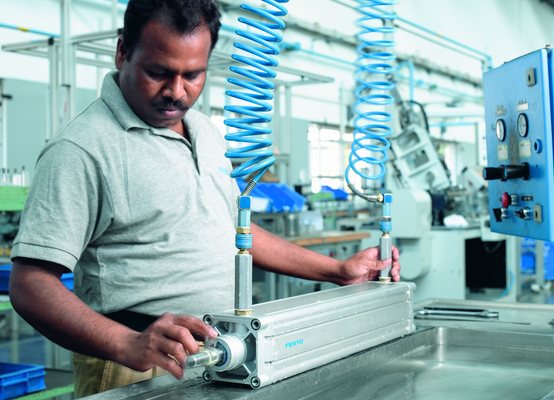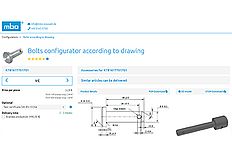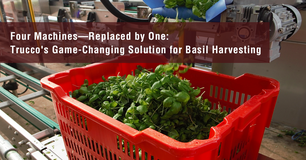Festo is actually viewing production from various points of view, but the focus of attention is on the development of new technologies and on technical education that meets the requirements of Industry 4.0.
Partner country India: Festo is a partner in industry and in education and training
Festo India is making an important contribution to the success of the family enterprise and the development of the region. This is confirmed by Rashmikant Joshi, Managing Director of Festo India: "The size of the Indian national economy, transformations in the age structure of the population and the relatively high level of economic growth make the Indian subcontinent an important market for the future. Despite the cautious forecasts for the Indian economy, Festo grew by 12% last year alone."For around 50 years Festo has been a partner of Indian industry, which is relying to an increasing extent on automation technology and now numbers among the world's most strongly expanding national economies. The Global Production Centre Bangalore manufactures around 2,000 different products and components. Some 80% of the products made at the GPC are destined for the regional market. India is thus an important factor not only for Festo, but also for the global economy; in 2015 it is the partner country of the Hannover Messe trade fair.
Qualification 4.0: Education for production of the future
For countries with a high proportion of productive industry, the fourth phase of industrialisation is both a potential game-changer and an immense challenge. Education and training for dealing with the new technologies and the development of digital networks in production, sales and further areas will be a decisive factor for the enterprises of these countries over the coming years. Festo Didactic is the world market leader in technical education and offers integral solutions in education and training for Industry 4.0 to enterprises and universities throughout the world.
SupraMotion 3.0: Automation modules for motion in suspension
Festo has already been investigating superconductor technology and its industrial application for several years. At the Hannover Messe 2015 trade fair, the company will once again be showcasing three new, innovative application concepts. "We are now not merely showing impressive levitation effects and the opportunities offered by superconductor technology, but are actively discussing their potential together with the automation industry. We are currently working towards initiating our first pilot projects," said Georg Berner, Head of Strategic Corporate Development, Group Holding Festo.
SupraCycle - contactless transfer
SupraCycle for the first time demonstrates how a suspended permanent magnet can be actively transferred from one superconductor automation module to another. Two magnetic object carriers are suspended in the cryostats at a distance of a few millimetres to the superconductors and then transferred in turn from one cryostat to the next.
SupraHelix - a rotating conveyor shaft
The SupraHelix exhibit makes use of two cryostats with superconductors that are arranged alongside each other on a semi-rotary drive unit. When cooled to below their transition temperature, they suspend a shaft with integrated permanent magnets beneath them and hold it at a distance of eight millimetres. The shaft is inclined at 40° by means of the semi-rotary drive. A permanently excited integrated stepper motor sets it in rotation without contact, so that it can convey individual metal rings upwards along its thread. This exhibit shows how ring-shaped workpieces can be transported from one processing station to the next.
SupraCarrier - storing and moving objects on suspended rollers
Two cryostats with superconductors are mounted on an electrical axis, above each of which two magnetic transport rollers are held in suspension. A flat workpiece carrier rests on the rollers. The axis moves the superconductor elements horizontally. Between these and the suspended rollers is a cover plate with openings through which the rollers are retracted when the cryostats are lowered; the workpiece carrier then lies on top of the cover plate. Suspended transport rollers such as these could be used to move flat, non-ferromagnetic products of all sizes.
Networked technologies demonstrate new approaches - the Bionic Learning Network in 2015
In the Bionic Learning Network, an association of Festo with universities, institutes and development companies, the engineers have investigated and further developed technical concepts and industrial applications based on models from nature - at the 2015 Hannover Messe especially under the motto "Join the Network!" The BionicANTs and the eMotionButterflies illustrate how individual systems can be combined into an intelligent overall system by means of networked communication. In addition, the FlexShapeGripper shows how a flexible, adaptable gripping mechanism based on a natural model can find possible applications.
BionicANTs - cooperative behaviour based on a natural model
For the BionicANTs, the Festo engineers have not only taken the delicate anatomy of the natural ant as a role model. For the first time, the cooperative behaviour of the creatures has also been transferred to the world of technology using complex control algorithms."Like their natural role models, the BionicANTs work together under clear rules", explains Dr.-Ing. Heinrich Frontzek, Head of Corporate Communication and Future Concepts at Festo. "They communicate with each other and coordinate both their actions and movements. Each ant makes its decisions autonomously, but in doing so is always subordinate to the common objective and thereby plays its part towards solving the task at hand." In an abstract manner, this cooperative behaviour provides interesting approaches for the factory of tomorrow. Future production systems will be founded on intelligent components, which adapt flexibly to different production scenarios and thus take on tasks from a higher control level.
FlexShapeGripper - gripping modelled on the chameleon's tongue
Gripping applications have always played a key role in production. In cooperation with the University of Oslo, Festo is now presenting a gripper whose working principle is derived from the tongue of a chameleon. "The FlexShapeGripper can pick up, gather and set back down several objects with the widest range of shapes in one procedure - without the need for a manual conversion", says Dr. Frontzek. The unique inherent ability to adapt to different shapes gives the FlexShapeGripper its name.This is made possible by its water-filled silicone cap, which wraps itself around the items being gripped in a flexible and form-fitting manner.In future, the FlexShapeGripper could be used in any facility where multiple objects with a range of different shapes are handled at the same time - for example in the service robotics sector, for assembly tasks or when handling small parts.
eMotionButterflies - ultra-lightweight flying objects with collective behaviour
The eMotionButterflies developed by Festo demonstrate complex issues from the world of future production such as functional integration, ultra-lightweight construction and communication between individual systems that is networked and optimised on a real-time basis. The aesthetically appealing bionic butterflies show the extent to which the virtual and real worlds can grow together. The coordination between the individual flying objects is effected autonomously and safely by means of a well-networked external guidance and monitoring system. The communication and sensor technology used, which constitutes an indoor GPS system, enables the butterflies to exhibit collective behaviour without danger of collision.The combination of integrated electronics and external camera technology with a host computer ensures process stability by means of an intelligent guidance and monitoring system.






















































